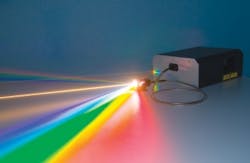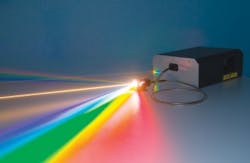PDT proves effective for early-stage oral cancers
Researchers at the Henry Ford Health System (Detroit, MI) have concluded a study that finds photodynamic laser therapy (PDT) effective for treating early-stage (Tis-T2N0M0) squamous cell carcinomas of the oral cavity and oropharynx. The approach they tested uses PHOTOFRIN (porfimer sodium) as a catalyst. The study involved 30 patients with early-stage cancer who were deemed not suitable for standard therapies or who had failed conventional therapy.
Each patient received an injection with PHOTOFRIN (dose 2.0 mg/kg) on an outpatient basis. Patients were treated in the operating room 48–60 hours later under general anesthesia with photoactivation using a 630 nm diode laser. The laser light was delivered via a microlens fiber for a surface treatment at a dose of 50–100 J/cm2 or via a 1.0 cm cylindrical diffusing fiber at a dose of 50–100 J/cm for interstitial technique.
Following treatment, more than 80% of the patients (24) achieved complete remission, and the remaining 20% (6) saw partial remission for up to 26 months. Of the 24 patients who achieved a complete response, 11 remained free of disease at two years.
The work is described by V.G. Schweitzer and M.L. Somers in Lasers in Surgery and Medicine, 42:1-8, 2010.
More Brand Name Current Issue Articles
More Brand Name Archives Issue Articles

